- Author Matthew Elmers [email protected].
- Public 2023-12-16 21:49.
- Last modified 2025-01-24 09:17.
United States Air Force Special Operations Aviation … Currently, unmanned aerial vehicles for various purposes have become widespread in the American armed forces and play an important role in the "war on terror" declared by the US leadership. It is quite natural that the US Air Force Special Operations Command has adopted several types of medium and light UAVs to perform reconnaissance, observation and target designation tasks, as well as to deliver pinpoint strikes. At the same time, the number of drones in the US Air Force MTR is constantly increasing and new squadrons are being formed.
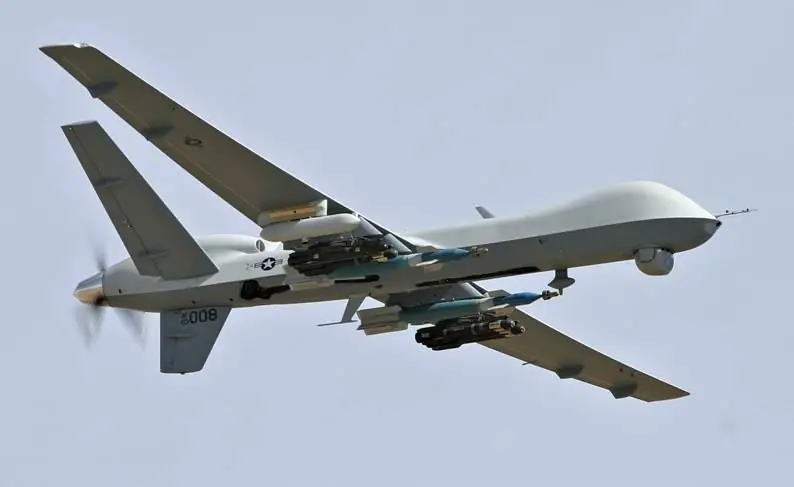
UAV MQ-9A Reaper
The main reconnaissance and strike unmanned aerial vehicle available to the US Air Force Special Operations Command is currently the MQ-9A Reaper, which entered service in 2008.
The MQ-9A UAV is based on the MQ-1 Predator, the main differences from which are the Honeywell TPE331-10 turboprop engine and the fuselage extended from 8, 23 to 11, 6 m. The "Reaper" has a "more traditional" V-shaped tail, which has an upper V-shape. The wingspan increased from 14, 24 to 21, 3 m. The maximum take-off weight increased from 1050 to 4760 kg. Transition from a 115 hp piston engine on a turboprop with a capacity of 776 hp. allowed to double the maximum flight speed and ceiling. The payload mass increased from 300 to 1700 kg. With an empty "Reaper" weighing 2223 kg, its fuel tanks hold 1800 kg of aviation kerosene. During reconnaissance and patrolling, the drone can stay in the air for about 30 hours. At full combat load, the flight duration does not exceed 14 hours. The cruising flight speed is 280-310 km / h, the maximum speed is 480 km / h. With a maximum combat load, the flight altitude usually does not exceed 7500 m, but in reconnaissance missions the MQ-9A is capable of climbing to an altitude of more than 14000 m.
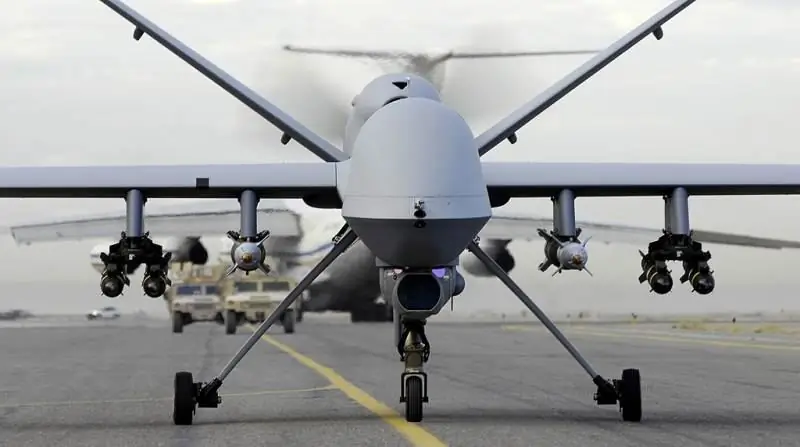
The unmanned Reaper is theoretically capable of carrying up to 14 Hellfire air-to-ground missiles, while its predecessor, the Predator, is armed with only two laser-guided missiles. The armament located on six points of the external suspension includes the AGM-114 Hellfire ATGM, the 227-kg GBU-12 and GBU-38 bombs guided.
For target recognition and visual observation, the AN / AAS-52 optoelectronic system, manufactured by Raytheon, is used. It includes television cameras operating in the visible and infrared ranges, a high-resolution television system capable of reading a car's license plate from a distance of 3 km and a laser rangefinder-target designator designed to guide weapons systems. Guidance and target designation can be carried out both by a ground operator or other aircraft, and by means of its own OES equipped with a laser designator.
Missiles of the Hellfire family with various types of warheads are mainly designed to destroy point targets: armored vehicles, cars, boats, firing points, manpower located in the open and in light field shelters. The main factor limiting the effectiveness of the use of relatively light guided missiles is the low weight of the warhead compared to the weight of the missile itself. A compromise between accuracy and warhead power can be corrected air bombs, which, at a shorter range, have satisfactory accuracy characteristics and a significantly more powerful warhead.
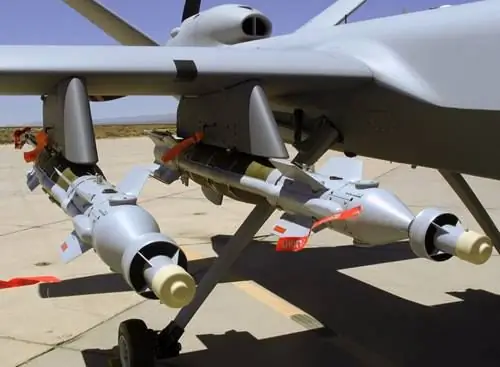
The GBU-12 Paveway II laser-guided bomb is designed to destroy point fortified targets and infrastructure facilities, transport hubs, various equipment, manpower and military field installations.
Guided aerial bomb GBU-38 JDAM with inertial-satellite guidance system, provides all-weather application. Unlike GBU-12 Paveway II, it does not require good weather conditions, no fog, rain and low clouds that impede the passage of the laser beam. But at the same time, the use of GBU-38 bombs is carried out on targets whose coordinates are known in advance.
The Reaper avionics also includes the AN / APY-8 Lynx II synthetic aperture multi-mode radar designed for terrain mapping and detection of moving and stationary targets in the absence of visual contact. In 2015, to reduce the risk of hitting the "Reaper" with modern air defense systems, some of the drones were equipped with ADM-160 MALD and MALD-J traps-simulators, and the AN / ALR-67 radar warning system was tested.
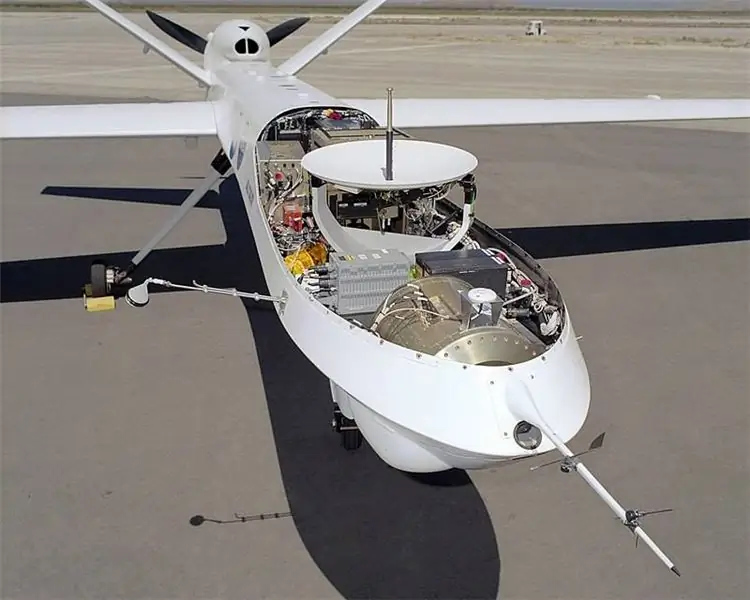
The MQ-9A UAV ground control equipment is compatible with the MQ-1B equipment. The tactical unit MQ-9A consists of several UAVs, a ground control station, communication equipment, spare parts and technical personnel.
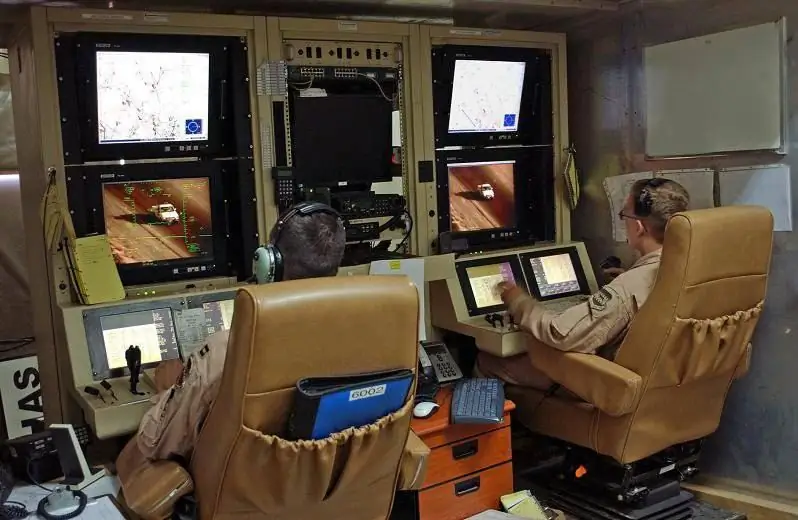
In flight, the UAV is controlled by an autopilot, its actions from the ground are controlled by a pilot and an operator of electronic systems. In most cases, the equipment located at the forward airfield where the drone is directly based only controls takeoff and landing, and the actions are controlled from the territory of the United States via satellite communication channels. In this case, the response time to the received command is approximately 1.5 s. The main control center for American medium and heavy class UAVs is located at Creech Air Force Base, Nevada. It is from here that drone operations around the world are controlled. This method of controlling drones allows them to operate autonomously at a considerable distance from the home airfield, outside the range of ground-based radio transmitters.
In March 2019, it was reported that General Atomics Aeronautical Systems had tested a new Block 50 Ground Control Station (GCS) to control the MQ-9A Reaper reconnaissance and strike unmanned aerial vehicle. The control was carried out from the control complex located at the Great Butte airfield in the state of California.
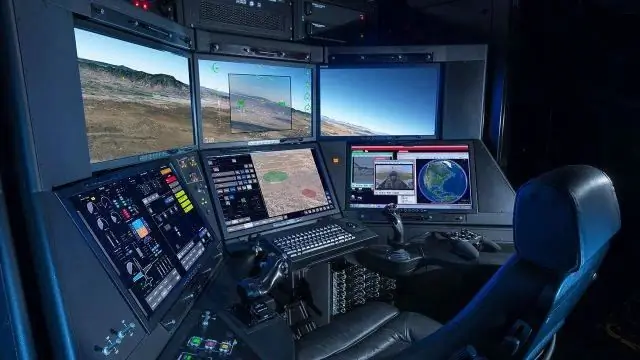
The operator station at Block 50 GСS actually simulates the cockpit of a manned aircraft, with appropriate visualization and convergence of all control displays and information display into a "single cockpit", which significantly increases the operator's situational awareness. The main advantage of this solution is the ability to reduce the number of UAV operators to one person. Also, the Block 50 GCS station is equipped with a new integrated multi-channel secure communication system Multi-Level Secure / Integrated Communication System (MLS / ICS), which makes it possible to increase the volume of information transmitted over secure channels from the UAV to the squadron's operational center with subsequent transmission to other consumers.
An important factor is the ability to quickly transfer the MQ-9A Reaper UAV to operational airfields around the world. In 2013, it was announced that the Special Operations Command was using C-17A Globemaster III military transport aircraft for this.
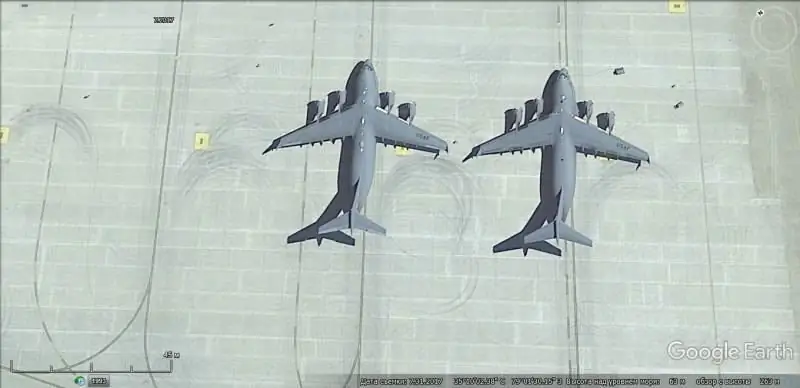
The ground technical services of the US Air Force MTR should prepare a drone, a ground control complex and equipment for operation at a remote airfield in less than 8 hours and load them into a military transport aircraft. No more than 8 hours are allotted for unloading it after the arrival of the transporter, and preparing the shock-reconnaissance MQ-9A for actions in the interests of special forces. The choice of the S-17A was due to the fact that this military transport aircraft has sufficient carrying capacity, relatively high speed, good range,air refueling system and the ability to take off and land from poorly prepared strips.
Currently, the Special Operations Command has five combat squadrons armed with MQ-9A UAVs. The 2nd Special Operations Squadron, assigned to Hurlburt Field in Florida, was stationed at Nellis AFB in Nevada until 2009. In fact, its equipment and personnel are mostly located at airfields outside the United States. In the past, the 2nd MTR Squadron of the US Air Force was equipped with the MQ-1 Predator UAV, which was officially decommissioned in March 2018. Three more unmanned squadrons, 3rd, 12th and 33rd, are assigned to Cannon Air Force Base in New Mexico.
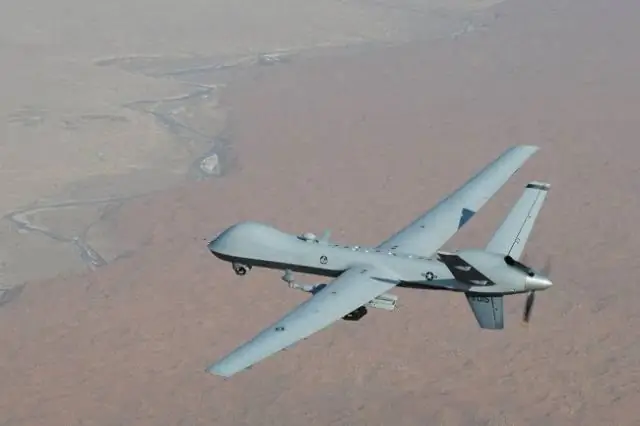
A special place in the MTR of the US Air Force is occupied by the 12th Squadron, also stationed in Canon. Its specialists are trained to control the actions of unmanned aerial vehicles directly from forward-based airfields. This is done in case of failure of satellite communication systems. In December 2018, another unmanned squadron armed with the MQ-9A was formed at Hurlburt Field.
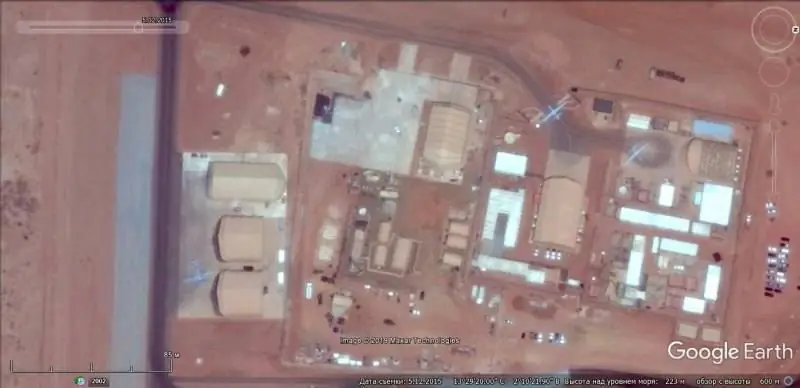
The combat activities of unmanned squadrons of special forces are not advertised. However, it is known that their equipment and personnel were stationed in Iraq, Afghanistan, Niger, Ethiopia. A particularly large fleet of drones is deployed at the Chabelle airbase, specially built in 2013 for American UAVs in Djibouti.

The "Predators" and "Reapers" based here took an active part in the fighting in Yemen. At the same time, at least two MQ-9A were hit by Houthi air defense systems, several more armed drones were lost in Iraq and Afghanistan.
Light unmanned aerial vehicles of the United States Air Force Special Operations Command
In addition to the MQ-9A reconnaissance and strike UAVs, the US Air Force's MTR uses several models of light drones. In August 2004, the MQ-27A UAV, originally known as the ScanEagle, was first used in Iraq. This drone was created by Insitu, a subsidiary of Boeing Corporation, based on the SeaScan civilian apparatus designed to detect schools of fish on the high seas.
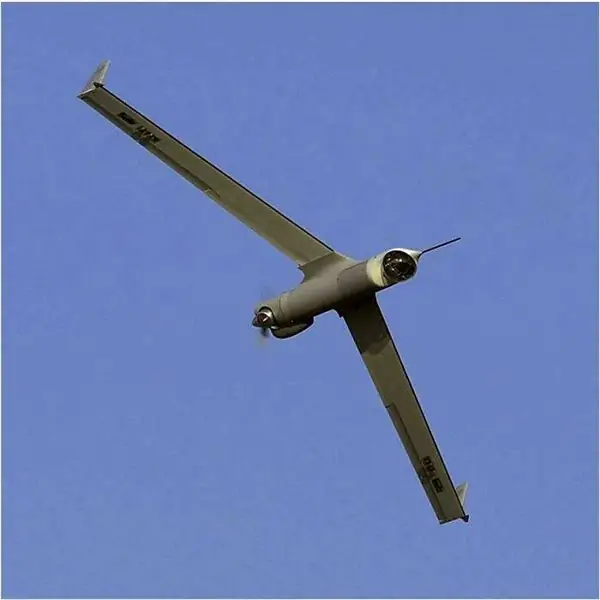
The MQ-27 UAV has a takeoff weight of 22 kg and is equipped with a 1.5 hp two-stroke piston engine. The maximum speed is 148 km / h. Cruising - 90 km / h. Ceiling - 5900 m. Time spent in the air - 20 hours. Length - 1, 55-1, 71 m (depending on modification). Wingspan - 3, 11 m. Payload - 3, 4 kg. The payload was usually a stabilized optoelectronic or IR camera on a lightweight stabilized platform and an integrated communication system.
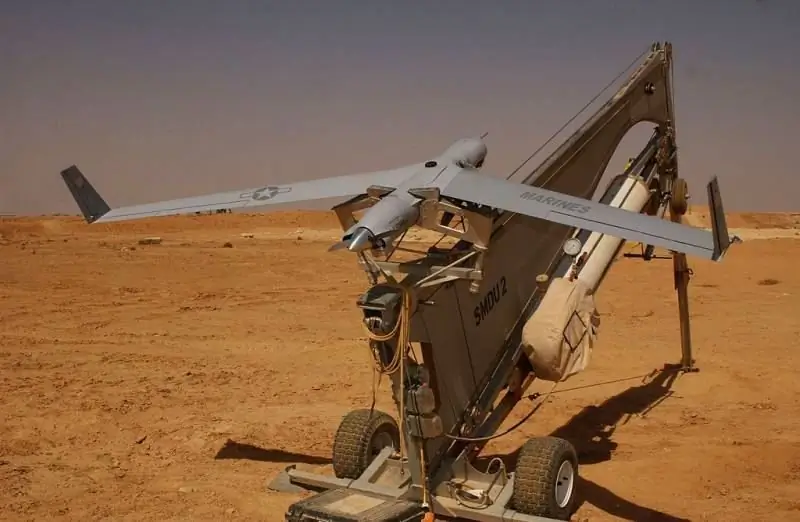
The MQ-27A is launched using a pneumatic launcher, SuperWedge. Satellite equipment NavtechGPS is used for navigation. The ground control station is capable of controlling the UAV and receiving an image at a distance of up to 100 km. In 2006, the cost of the ScanEagle system, which consisted of four drones, a ground station, a pneumatic catapult, a set of spare parts and a remote video terminal, was $ 3.2 million.
In March 2008, Boeing specialists, together with representatives of ImSAR and Insitu, tested the ScanEagle with the NanoSAR A radar installed on board. According to advertising data from ImSAR, the NanoSAR A is the world's smallest and lightest synthetic aperture radar. It weighs only 1.8 kg and has a volume of 1.6 liters. This radar is designed to provide high-quality real-time imaging of terrestrial objects in adverse weather conditions or in conditions of heavy smoke and dust.
In October 2014, the operation of the MQ-27V UAV began. This model has a more powerful engine and a slightly lengthened fuselage. The main reason for the increase in engine power was the use of a new on-board electric generator. This happened due to the increased energy consumption of onboard equipment. Flight data have not changed compared to the MQ-27A, but the flight duration has decreased to 16 hours. UAV MQ-27V is equipped with a new universal surveillance system "day-night", improved navigation and communication equipment. It also became possible to install electronic reconnaissance and electronic warfare equipment.
In 2007, the RQ-11В Raven UAV entered service with the special operations forces. Initially, it was intended for the battalion level of the American army, but later it was actively used by special forces. The Special Operations Directorate ordered 179 complexes with four UAVs in each. The cost of one set, which includes two control stations, four drones and a set of spare parts, is $ 173,000. Since 2004, about 1900 RQ-11 gliders have been assembled.
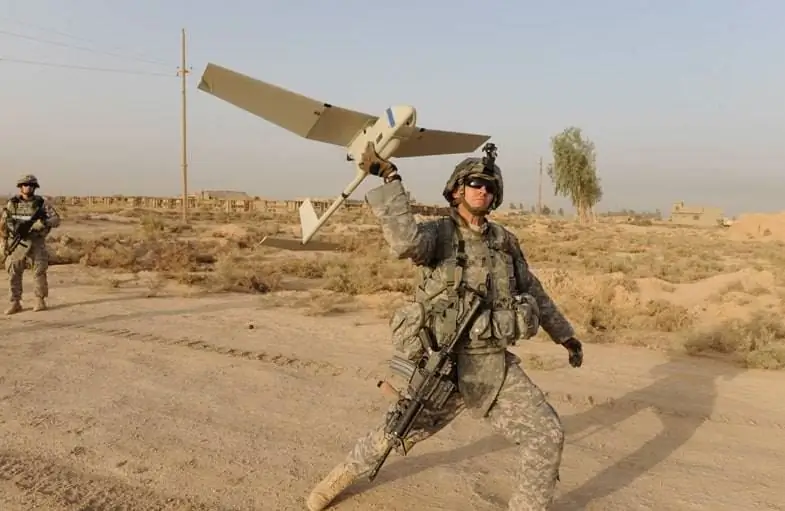
This 1.9 kg drone is propelled by a pushing two-blade propeller that drives the Aveox 27/26/7-AV electric motor. The wingspan is 1.5 m. The maximum flight speed is about 90 km / h. Cruising - 30 km / h. Duration of stay in the air - up to 1.5 hours.
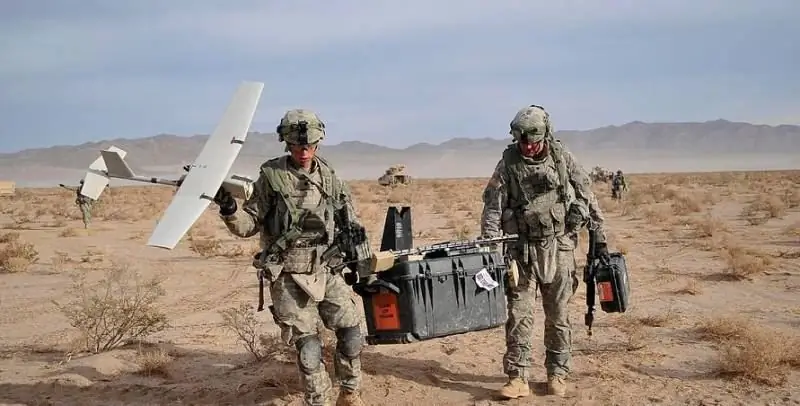
The control station and the RQ-11 UAV are stored in protected containers and transported by road. A drone and a container with equipment are carried over a short distance by two servicemen.

The Raven can fly independently using GPS navigation or manually from a ground control station. One press of the button by the operator returns the drone to the starting point. The standard target load consists of a color daytime television camera or a nighttime infrared camera.
The US Armed Forces and their allies have been very active in using UAVs of the RQ-11A and RQ-11B modifications in Afghanistan, Iraq and Yemen. Also, drones of this model were seen in the war zone in the east of Ukraine. Users noted good data for a device of this class, simplicity and ease of use. However, the Ukrainian military noted the vulnerability of the control and data transmission channel to modern electronic warfare. In this regard, in the United States, the RQ-11B DDL (Digital Data Link) modification with Harris SSDL noise-immune digital communication equipment was adopted in 2015.
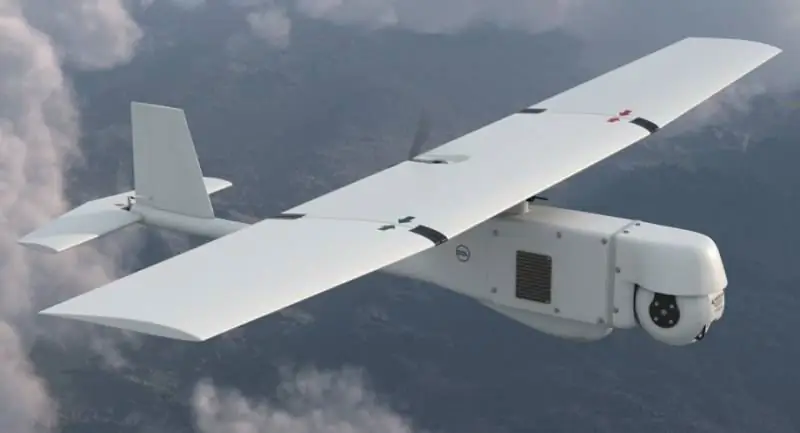
Prior to this, the manufacturer AeroVironment began shipping the RQ-11B Raven Rigged 3d model with a rotating Raven Gimbal combo camera, which has day and night channels.
Also, work is underway to create a modification capable of staying in the air longer. In November 2012, specialists from the Air Force Research Laboratory at Wright-Patterson AFB, Ohio, tested the Solar Raven apparatus. On the serial RQ-11B, the wings were pasted over with flexible solar panels and the power supply scheme was changed. Due to this, in the daytime, the duration of the flight has increased significantly.
The smallest drone used by US Special Forces on a permanent basis in Afghanistan and the Middle East is the Wasp III. This device was created by order of the US Air Force Special Operations Command by AeroVironment and the Defense Advanced Research Projects Agency (DARPA) and adopted by AFSOC in 2008. The cost of one drone and control station at that time was $ 50 thousand.
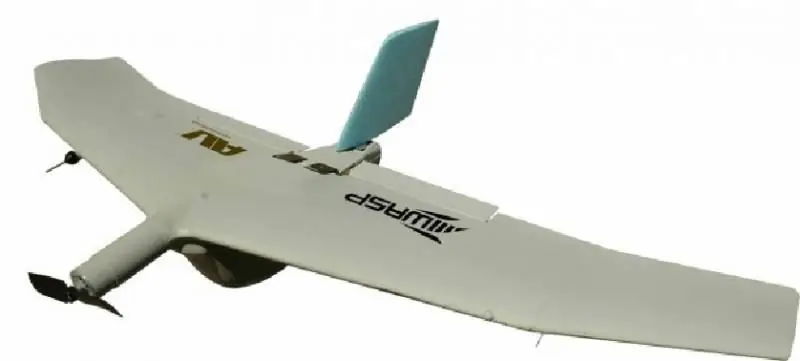
The Wasp III UAV with an electric engine has a wingspan of 73.5 cm, a length of 38 cm, weighs 454 g and carries forward and side-looking optoelectronic color cameras with digital image stabilization. Range of action - up to 5 km from the ground control point. A lithium-ion battery built into the wing provides an airborne time of up to 45 minutes. The maximum flight speed is 65 km / h. Flight altitude - up to 300 m.
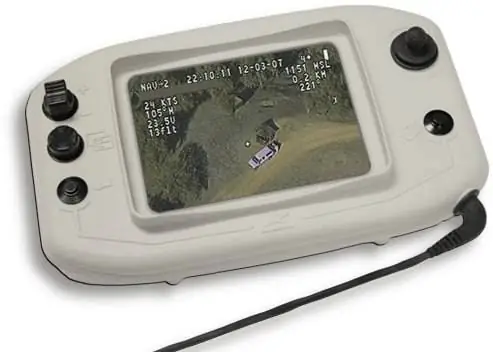
To control Wasp III, a set of equipment from an RQ-11B UAV can be used. There is also a lightweight control panel, which, together with the ground station, is carried in one backpack. The Osa-3 drones were intended for adjusting artillery and mortar fire, conducting reconnaissance in the enemy's near rear, surveying the area for possible ambushes and identifying camouflaged firing points. However, the methodology for using small-sized UAVs in the ILC and MTR of the US Air Force is different. The Marines operate the Wasp III in company and battalion levels, and special forces units can use it in squads, the number of which does not exceed 10 people.
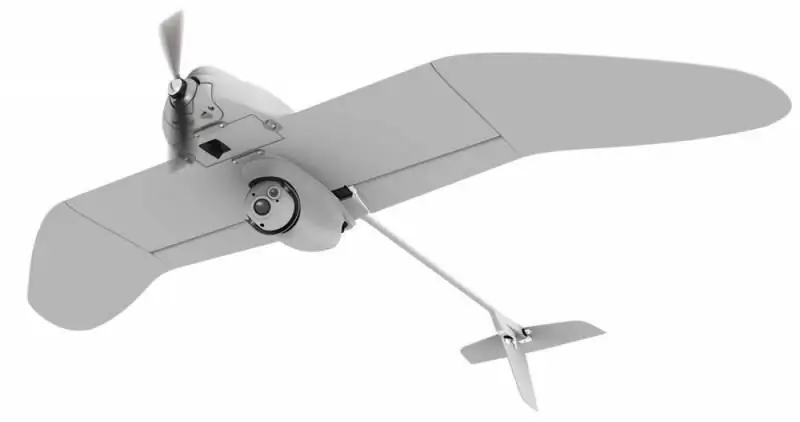
In May 2012, AeroVironment introduced an improved modification of the Wasp AE. The mass of this device is 1, 3 kg, and it can stay in the air for up to 1 hour. The Wasp AE UAV is equipped with a rotary combination camera with day and night modes.
Currently, the Wasp AE and Wasp III drones are used in parallel by the Special Operations Forces and the Marine Corps. Based on the experience of hostilities in Iraq and Afghanistan, it was concluded that the use of light UAVs at the disposal of unit commanders, whose soldiers come into direct fire contact with the enemy, can dramatically reduce losses in manpower and equipment, as well as increase the effectiveness of artillery mortar strikes.






